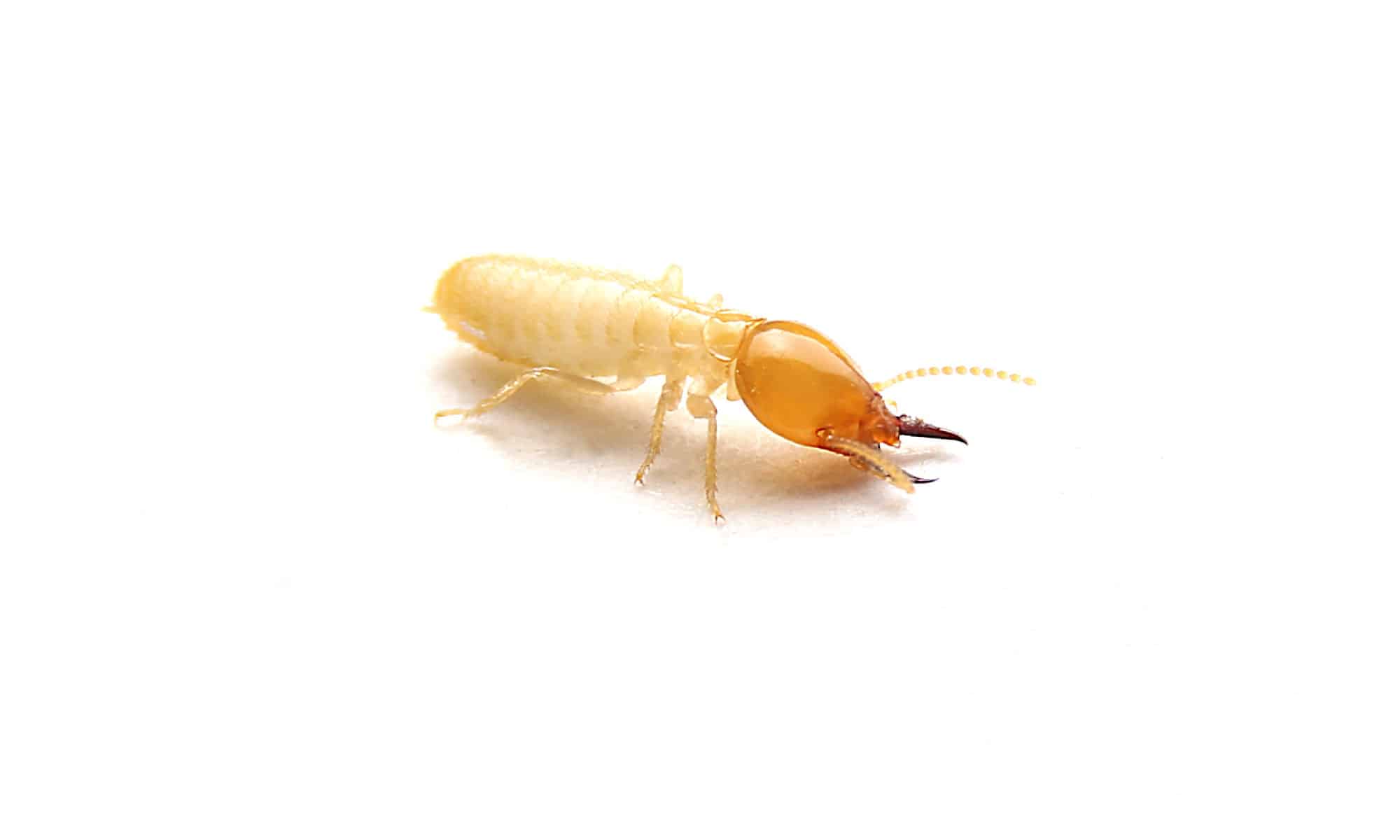Having termites is never a good thing. Once they’re in the walls of your home, it can feel impossible to know that they’re there. If you suspect you may have termites in your walls, you’re in the right place.
There are several helpful signs that these pesky critters are taking over without the need to start demolishing the walls. Let’s take a look at what you can expect to see.
1. Your Walls Sound Hollow
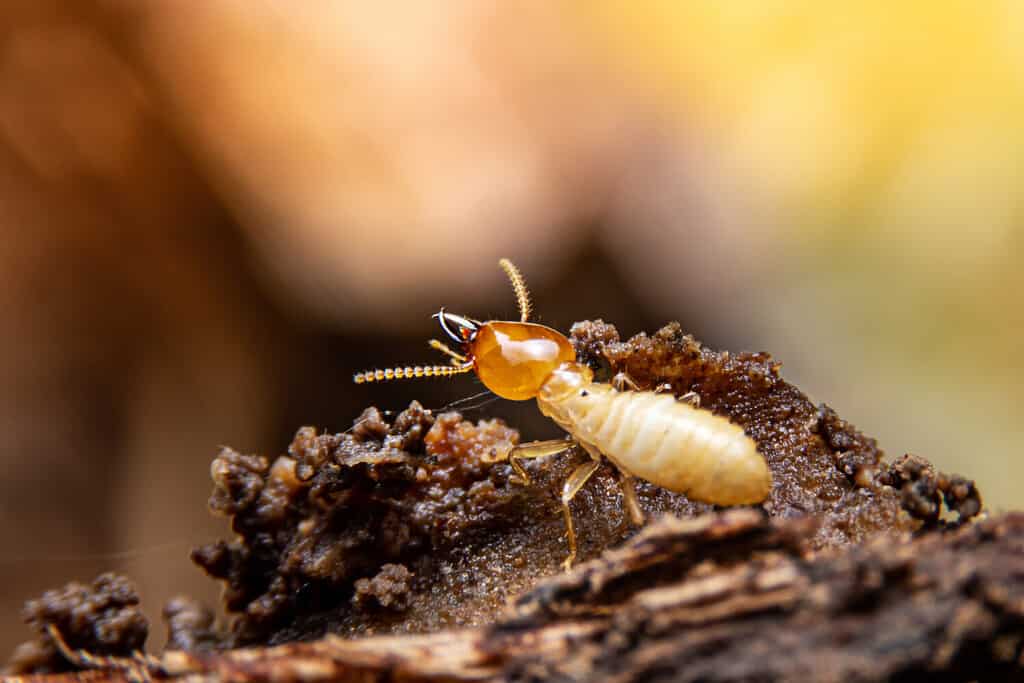
Termites have been around for over 120 million years!
©Witsawat.S/Shutterstock.com
If you suspect termites are inside your walls, tap the flat area lightly. There’s a chance that termites are eating at the interior wood framing if this produces a hollow sound. To confirm that the empty noise is distinct, listen to the sounds of several walls throughout your home.
If the termite destruction is severe enough, you might hear the wall inside break down when you pound on it.
2. Small Pinholes
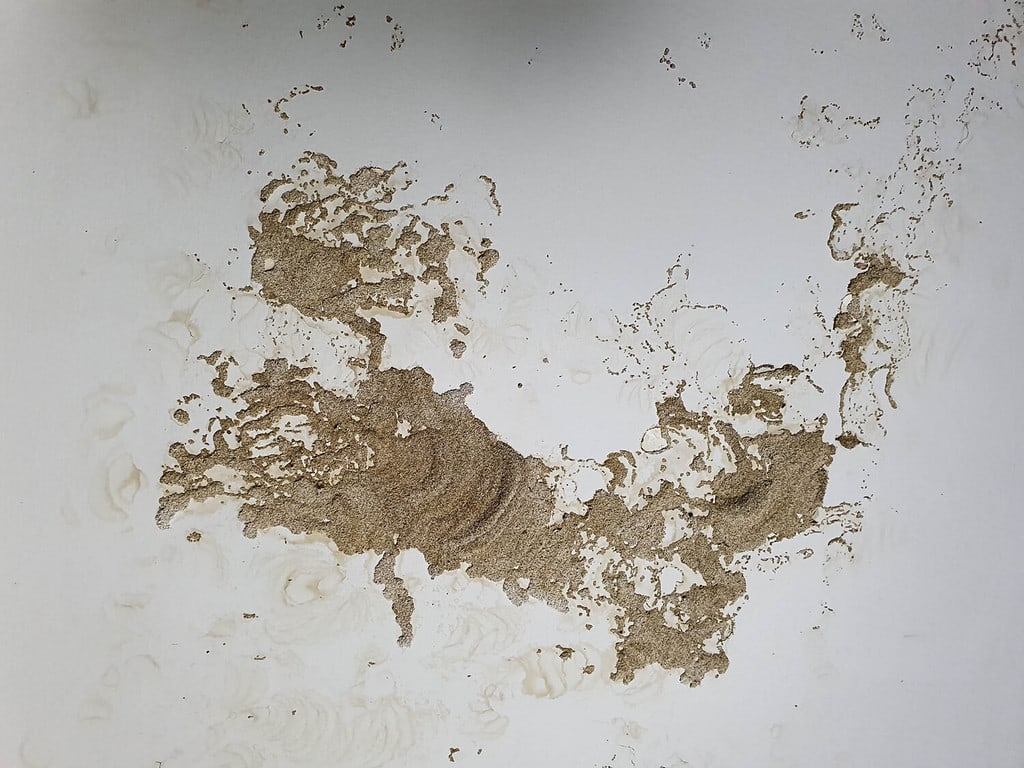
These creatures can build nests on ceilings.
©duen DD/Shutterstock.com
Termites make small pinholes in walls to allow them to escape and leave their territories. They might also find gaps in the walls to get inside or move around your house. Small pinholes in drywall are typically a reliable sign of an infestation of termites.
While it’s not always the situation, several termites will seal the openings to keep their colony safe. These markings are among the initial indications of termites in drywall.
3. Noticeable Mud Tubes
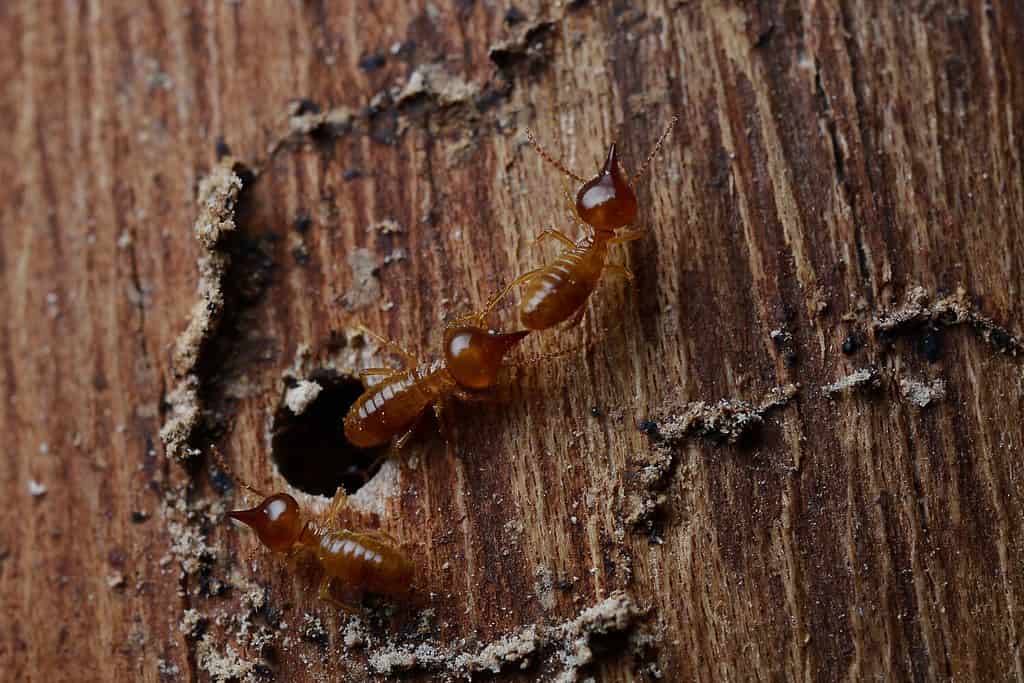
Termites destroy any wood they come in contact with.
©phadpangpang/Shutterstock.com
Termites tunnel or form mud tubes as they burrow beneath the surface. Typically, these dirt tubes have a width comparable to a pen. Mud tubes surrounding the foundation of your house indicate a termite infestation.
Mud tubes, nevertheless, aren’t always a sign of a current termite infestation because they can persist for a considerable amount of time in and out of your home. A mud tube’s top can be removed, and you can examine it daily to look for termites.
4. Flaking or Bubbling Paint
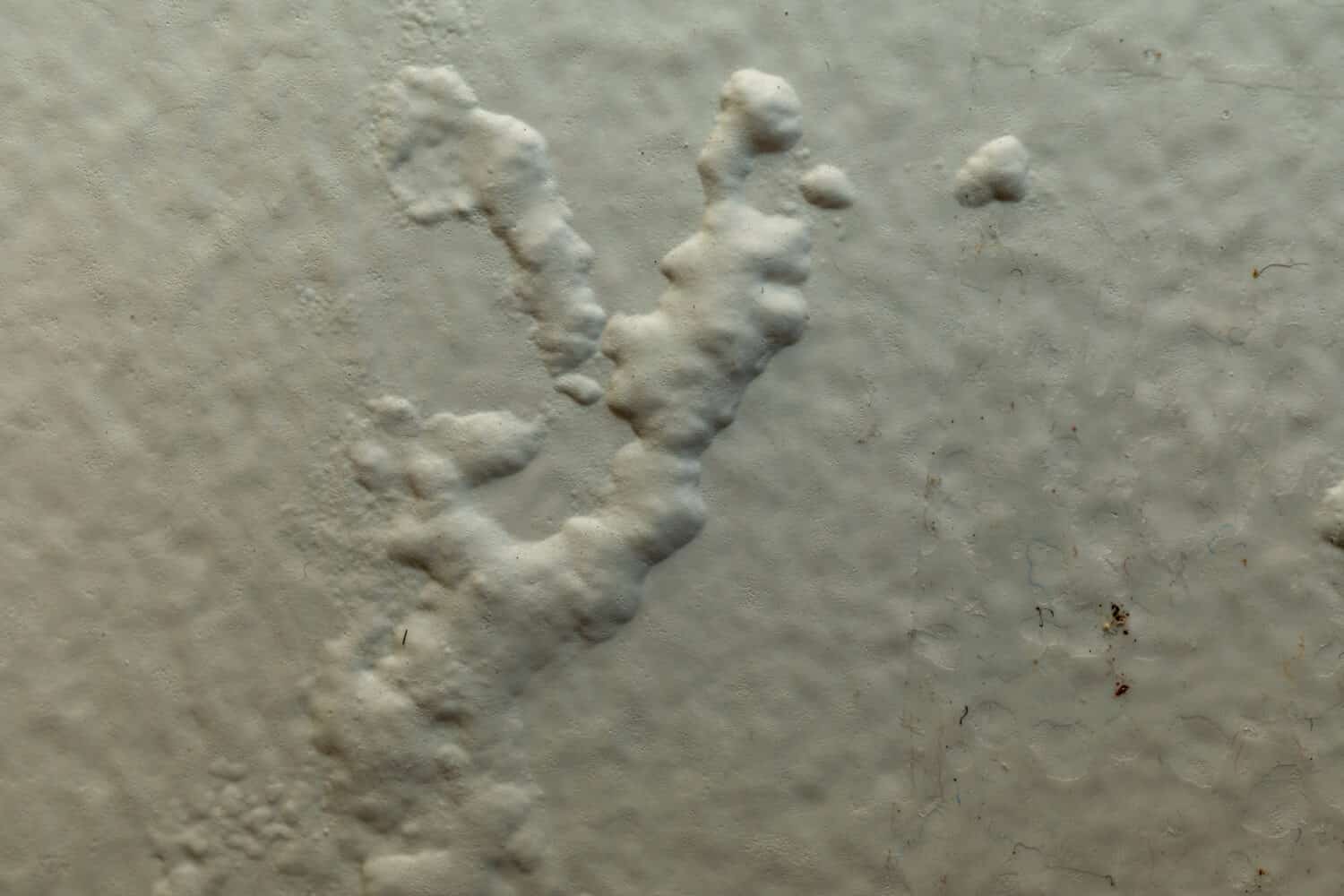
Termite infestations can lead to moisture damage.
©Carregui/Shutterstock.com
The presence of termites is one of the numerous causes of wall paint that can bubble or chip off. Due to their hydric requirements, wall termites will carry a little moisture into your walls when they settle in.
This moisture could interact with the surfaces of the paint on walls, resulting in peeling, cracking, bubbles, or flaking.
5. Visible Dust Near Floorboards
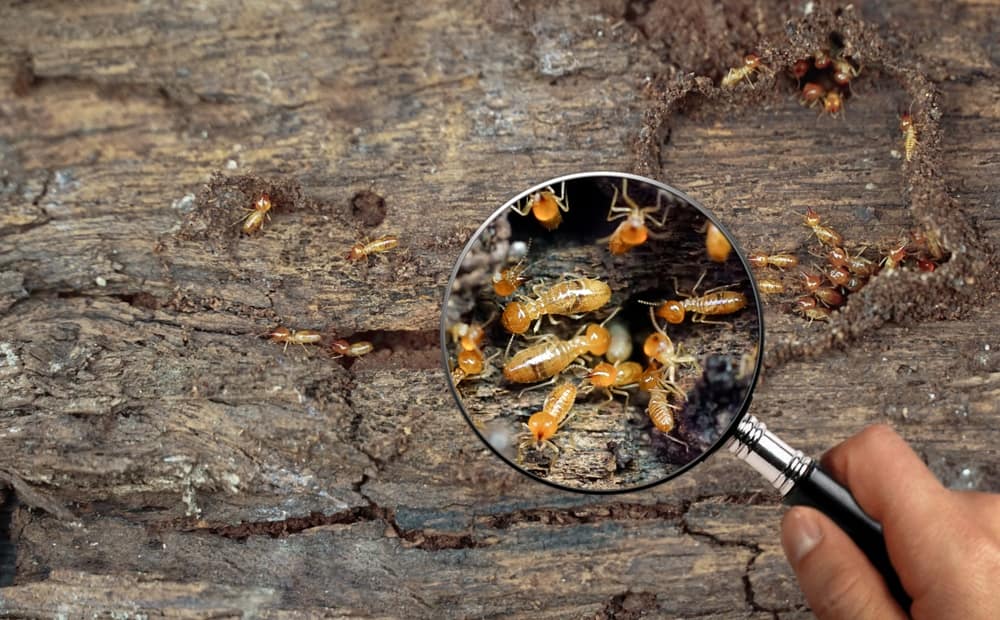
These pests can easily blend into their environment.
©Oasishifi/Shutterstock.com
Termites might not seem immediately apparent if dust accumulates on top of floorboards or where the wall joins the floor. If the dust has a dark hue that almost seems like black pepper, it may be termite particles.
When termites make holes in the drywall, dust will appear. It consists of wood shavings, dirt, and even termite droppings. Termites consume wood everywhere in your house. This is frequently most apparent on paneling and wood trim.
Look for any faint lines on any of the wood pieces surrounding your house that might point to a termite tunnel. Like in a maze, there will typically be a lot of lines pointing in different directions.
6. The Foundation Has Moved
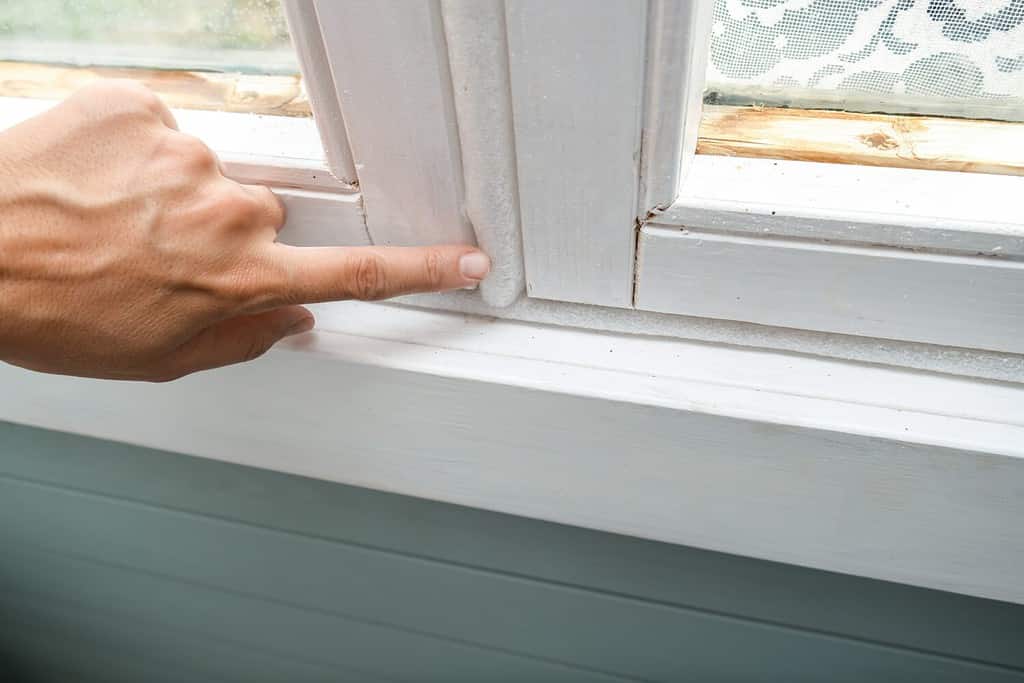
Termite infestations can lead to costly window and door repairs.
©ReaLiia/Shutterstock.com
Believe it or not, termites can alter the foundation of your home! Termites can do a great deal of damage to your home if they have been there for an extended period of time. Your house may shift or move as a result of this damage as it tries to withstand these pesky creatures eating through it.
Look for Draughtsman’s cracks over windows and doors. Poorly closing doors and windows are indicators of serious foundation damage in a house.
What If You Find Termites in Your Walls?
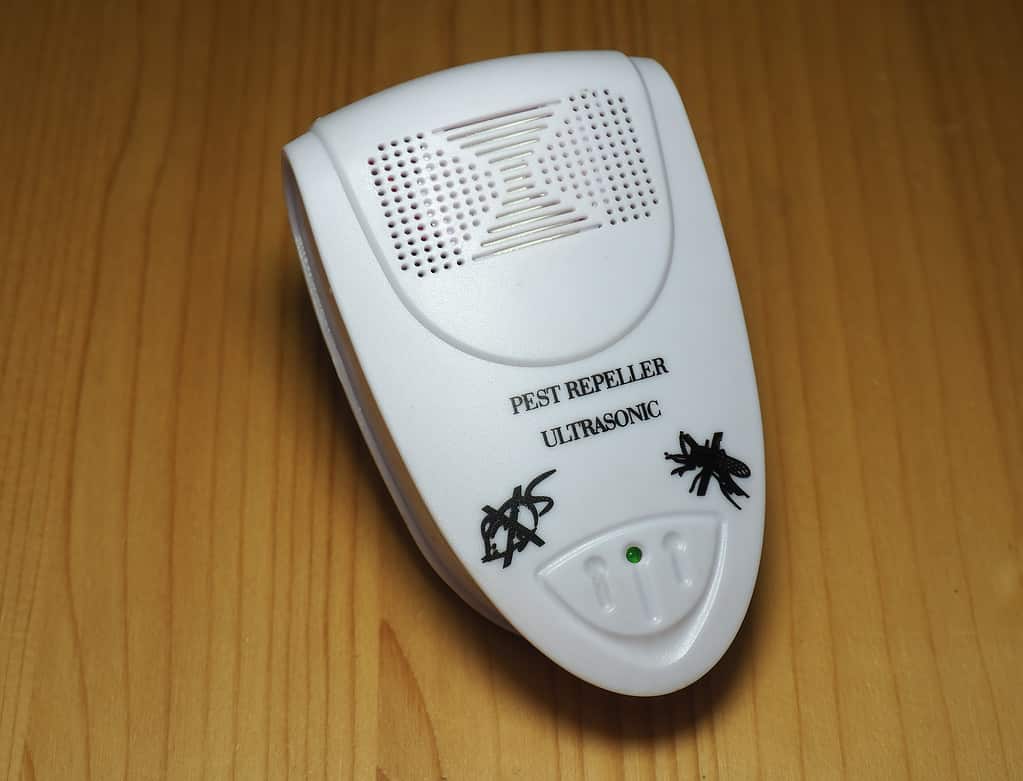
An ultrasonic repellent can be used on mice, spiders, and even termites.
©GS23/Shutterstock.com
Future damage can be substantial if termites in drywall are ignored at the first signs. When there is a termite infestation, it is best to act quickly. Here are some options to consider if you notice any warning signs of an issue.
Install termite traps. Put termite baits anywhere you believe the infestation to be within your home. The termites will be drawn to the potent poison by these baits. Keep children and pets away from the termite baits.
Another option is to employ a termiticide. This consists of a chemical that you can spray on walls, baseboards, and any visible cracks or crevices. The majority of termiticides are safe to use indoors; however, check the package directions for the product you are using.
Last but not least, hire a professional! Termite removal is typically a task best left to the pros. A pest control company will check for the insects throughout the whole property and then provide a personalized plan for getting rid of them.
Termite treatment is typically very affordable, and you’ll rest more peacefully knowing that the pests aren’t tearing up your home anymore.
Summary of Signs of Termites in Walls
| Rank | Sign of Termites |
|---|---|
| 1 | Your Walls Sound Hollow |
| 2 | Small Pinholes Visible |
| 3 | Noticeable Mud Tubes |
| 4 | Flaking or Bubbling Paint |
| 5 | Visible Dust Near Floorboards |
| 6 | Foundation Has Moved |
Thank you for reading! Have some feedback for us? Contact the AZ Animals editorial team.

